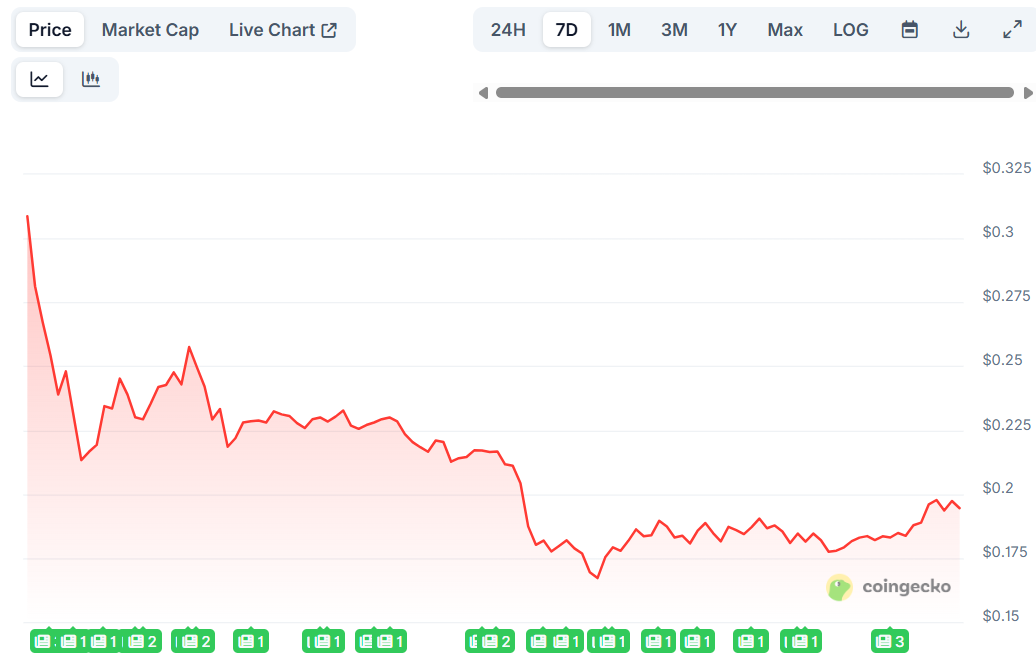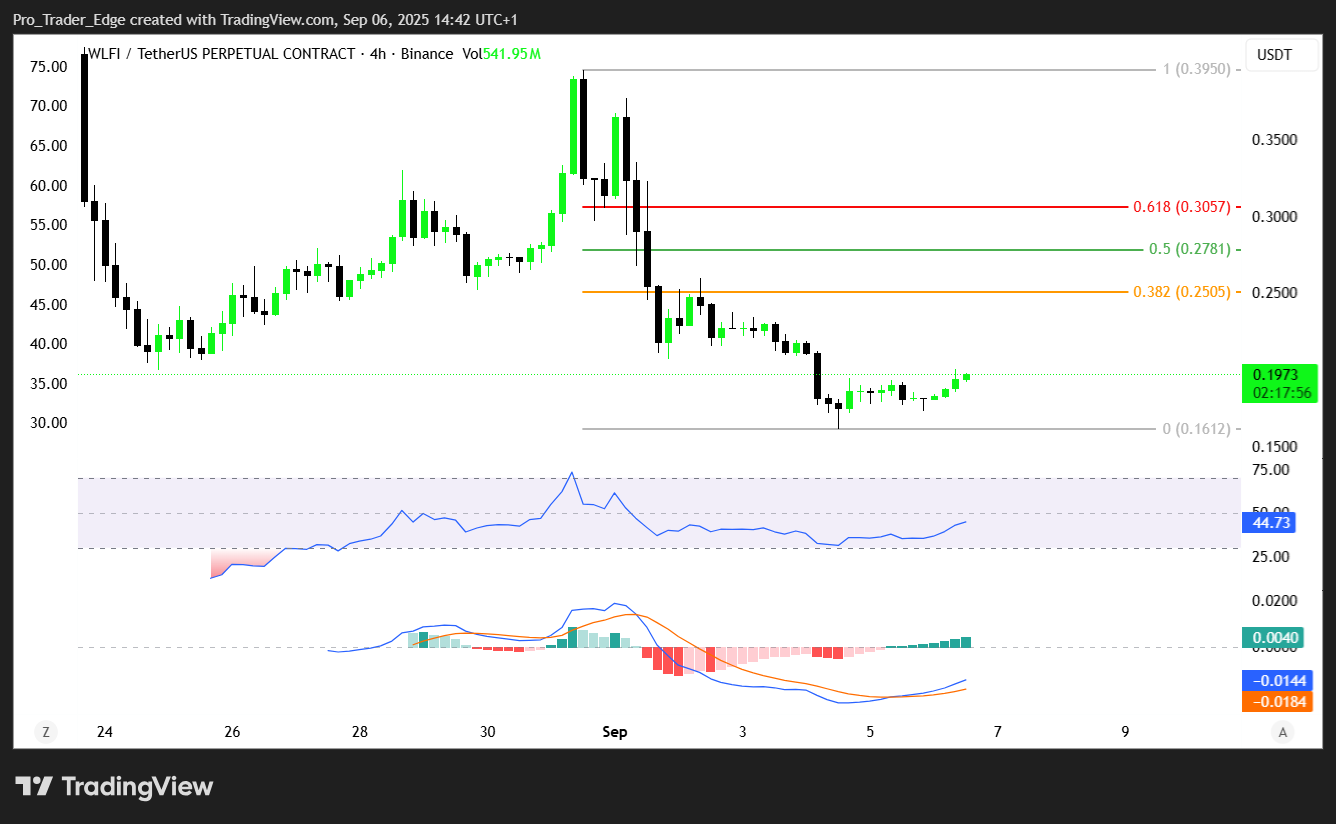World Liberty Financial’s decision to blacklist hundreds of wallets has sparked widespread concern in the crypto community. The Trump family-backed project froze 272 wallets, including one belonging to Tron founder Justin Sun.
We’ve heard community concerns about recent wallet blacklists. Transparency first: WLFI only intervenes to protect users, never to silence normal activity. 🦅
— WLFI (@worldlibertyfi) September 5, 2025
The token has fallen 40% since its listing and currently trades at $0.18. WLFI initially dropped 18.8% when news of the blacklisting first emerged.

World Liberty Financial claims the wallet freezes were meant to protect users from phishing attacks. The project stated that approximately 215 of the frozen wallets were linked to phishing attacks and 150 were compromised through support channels.
Justin Sun’s wallet was frozen on Friday after he made several small transfers between his own wallets. These transfers were described as “dispersion tests” following his token claims at launch.
The transfers initially made it appear that Sun was selling his WLFI holdings. However, on-chain analysis reveals a different timeline that contradicts this assumption.
Nansen data shows Sun transferred 50 million WLFI tokens worth $9.2 million on September 4 at 09:18 UTC. This transfer occurred three to five hours after the token’s steepest decline.
Interesting!
I asked the same question to the agent.
At first it thought @justinsuntron caused the dump.
Then I asked it to scrutinize the timestamps.
Conclusion seems to be: he did not.
Check screenshots from my chat with our agent: pic.twitter.com/feHu7SiZZG
— Alex Svanevik 🐧 (@ASvanevik) September 5, 2025
The timing indicates Sun’s transfers followed the crash rather than caused it. None of the transfers from Sun’s wallets were actual sales to external parties.
Market participants point to different factors behind WLFI’s decline. Broad shorting and dumping through market makers and trading desks across multiple exchanges appear to be the real drivers.
On-chain records show a transfer from BitGo to Flowdesk that coincided with the start of WLFI’s slide. This transfer has become a key data point in explaining the sell-off.
A separate $12 million WLFI transfer from HTX to Binance by a third-party market maker also occurred. The tokens were borrowed using HTX’s capital as part of a routine rebalance.
This transfer happened after WLFI’s sharpest declines and was considered too small to move the market. WLFI maintains a daily trading volume of over $700 million.
The wallet freezing has created anxiety among large investors and market makers. Industry insiders express concern about potential future restrictions on their holdings.
Market participants worry about arbitrary wallet freezes affecting their ability to trade. The sentiment among large traders has been summarized as “If they can do it to Sun, who’s next?”
World Liberty Financial maintains that it “only intervenes to protect users, never to silence normal activity.” The project insists the freezes were security measures rather than market manipulation.
Trading volumes for WLFI remain high at $1.7 billion, representing 36% of the token’s circulating supply. The token showed a 4% gain in the past 24 hours.

Technical analysis suggests WLFI is at a critical juncture with price breaking above key trend line resistance. If the price breaks above $0.21, analysts predict a potential move toward $0.40.
Sun reportedly purchased WLFI at $0.015, meaning he still holds substantial unrealized gains despite the recent market turmoil. The Tron founder has dismissed concerns about his token movements on social media.
The post World Liberty Financial (WLFI) Price Prediction: Token Crashes 40% After 272 Wallets Blacklisted appeared first on CoinCentral.
Also read: Bitcoin Price Watch: $110K Support in Play After Another Rejection at $113K